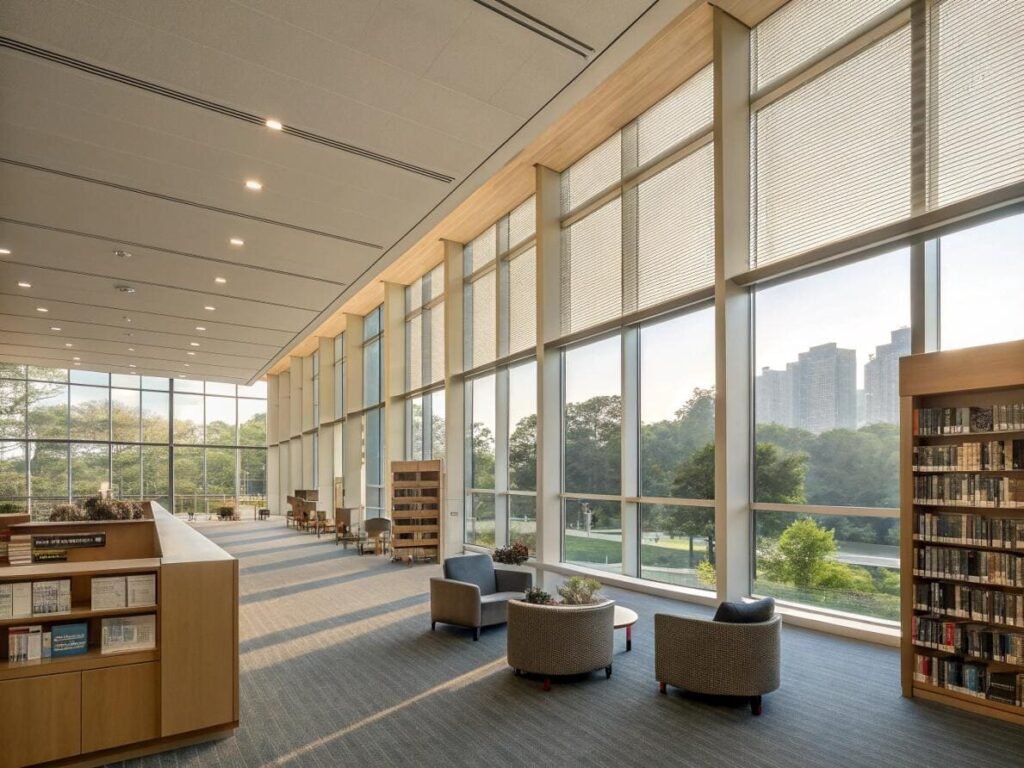Your property's energy bills are climbing, eating into your operating budget. Uncovered windows are like thermal holes, letting expensive heated or cooled air escape, and driving up your HVAC costs[^1].
Yes, the right window blinds significantly reduce energy costs. They act as a thermal barrier[^2], cutting heat loss in winter and blocking solar heat gain in summer, leading to measurable savings on your power bill.

When I talk to project managers like Emma, justifying the budget for high-performance blinds is always a key conversation. She was recently working on retrofitting a downtown office building and was skeptical about the real-world ROI. It’s easy to talk about savings, but she needed to see hard numbers. I walked her through the data, showing how a window treatment isn't just a design choice; it's an active part of a building's climate control system. By understanding the real performance metrics, you can confidently specify blinds as a genuine energy-saving investment.
Are blinds or curtains more energy-efficient?
You're trying to choose the best window treatment for insulation. Curtains look thick and heavy, but you've heard that certain blinds perform better. Which one is the right call for maximum efficiency?
Cellular (honeycomb) blinds are far more energy-efficient[^3] than standard curtains. Their unique, cellular structure is specifically designed to trap air, creating a powerful insulating barrier that curtains cannot match.
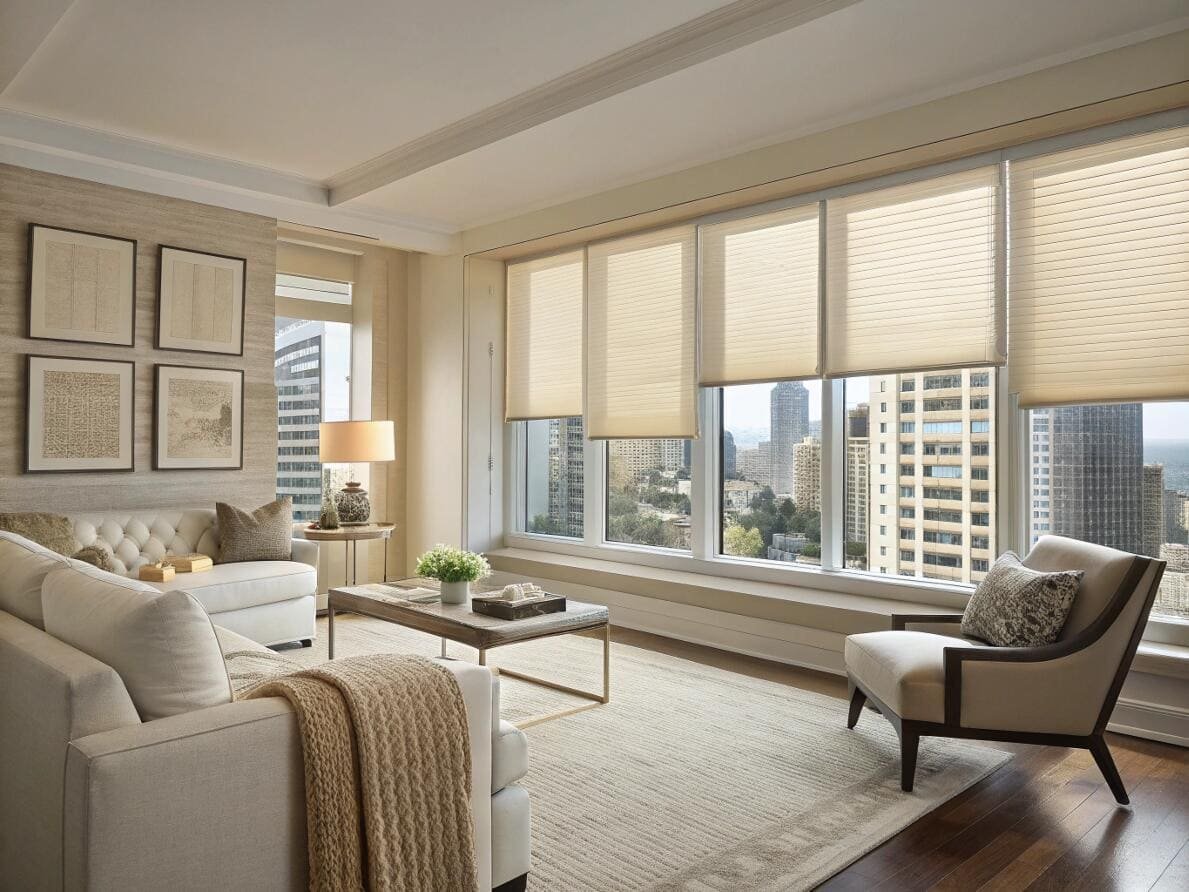
The key to energy efficiency in any window covering is its ability to trap a layer of still air. This trapped air slows the transfer of heat. While a heavy curtain does provide some insulation, its design is not optimized for this task. A honeycomb shade, on the other hand, is engineered for thermal performance. Its design consists of one or more layers of honeycomb-shaped pockets that trap air internally. This makes it one of the most effective insulators you can put on a window.
Let's look at the thermal performance data. A standard double-pane window has a U-Factor[^4] of around 2.6 W/(m²·K). A lower U-Factor means less heat is transferred. By adding a 38mm single-cell honeycomb blind, we can lower that U-Factor to 1.6. That's a 38% reduction in heat loss through the window, a result a standard curtain simply can't achieve.
| Window Covering | Typical Insulation Level | Why It Works |
|---|---|---|
| Honeycomb Shades | Highest | Cellular pockets trap air, creating a superior thermal barrier. |
| Roller Shades | Medium | A single layer provides a barrier; reflective coatings boost performance. |
| Aluminum Blinds | Low-Medium | Reflect solar heat but offer minimal insulation against heat loss. |
| Standard Curtains | Low | Provide some barrier but are not sealed at the edges, allowing air to circulate. |
How much energy can you really save with the right blinds?
You see marketing claims about energy savings, but you need real numbers to justify an investment. Vague promises won't convince a client, but a proven case study will.
In real-world projects, the savings are significant. A Toronto office retrofit saw a 12% reduction in HVAC costs, while a Texas home saved $167 a year on cooling after installing automated honeycomb blinds.
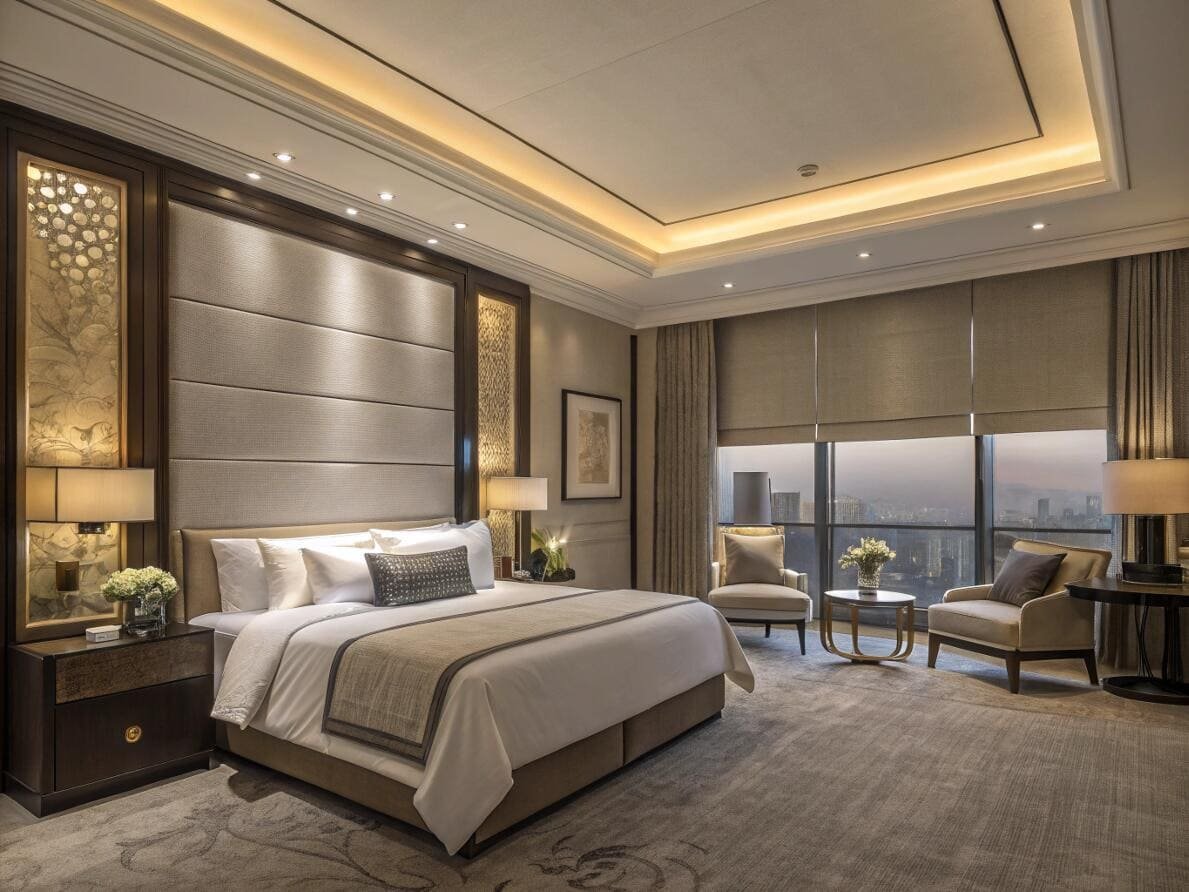
This is where we move from theory to reality. The savings come from two key metrics: reducing heat loss in winter (U-Factor) and blocking unwanted sun in the summer (Solar Heat Gain Coefficient[^5], or SHGC). A high-performance metalized roller shade can cut a window's SHGC from 0.62 down to just 0.25. This means it blocks an additional 59% of direct solar radiation from heating up the room, substantially reducing the load on your air conditioner.
These are not just lab values. They translate into real money.
- Austin, Texas Case Study: A 1,950 ft² single-story home installed automated honeycomb blinds. During the hot July-September period, the air conditioning load was reduced by 1.4 kWh per day. This resulted in an annual savings of $167.
- Rotterdam, Netherlands Case Study: A six-story office building replaced its exterior shading with interior motorized roller shades. The following winter, their natural gas consumption for heating dropped by 11%. The investment paid for itself in just 3.9 years.
How does automation multiply your energy savings?
You've installed energy-efficient blinds, but their effectiveness depends on people remembering to open and close them. Manual operation is unreliable and misses key opportunities for savings.
Automation via light sensors[^6] and schedules ensures blinds are always in the optimal position. This simple upgrade can boost annual energy savings by another 7-10% by consistently reducing HVAC load and maximizing natural light.
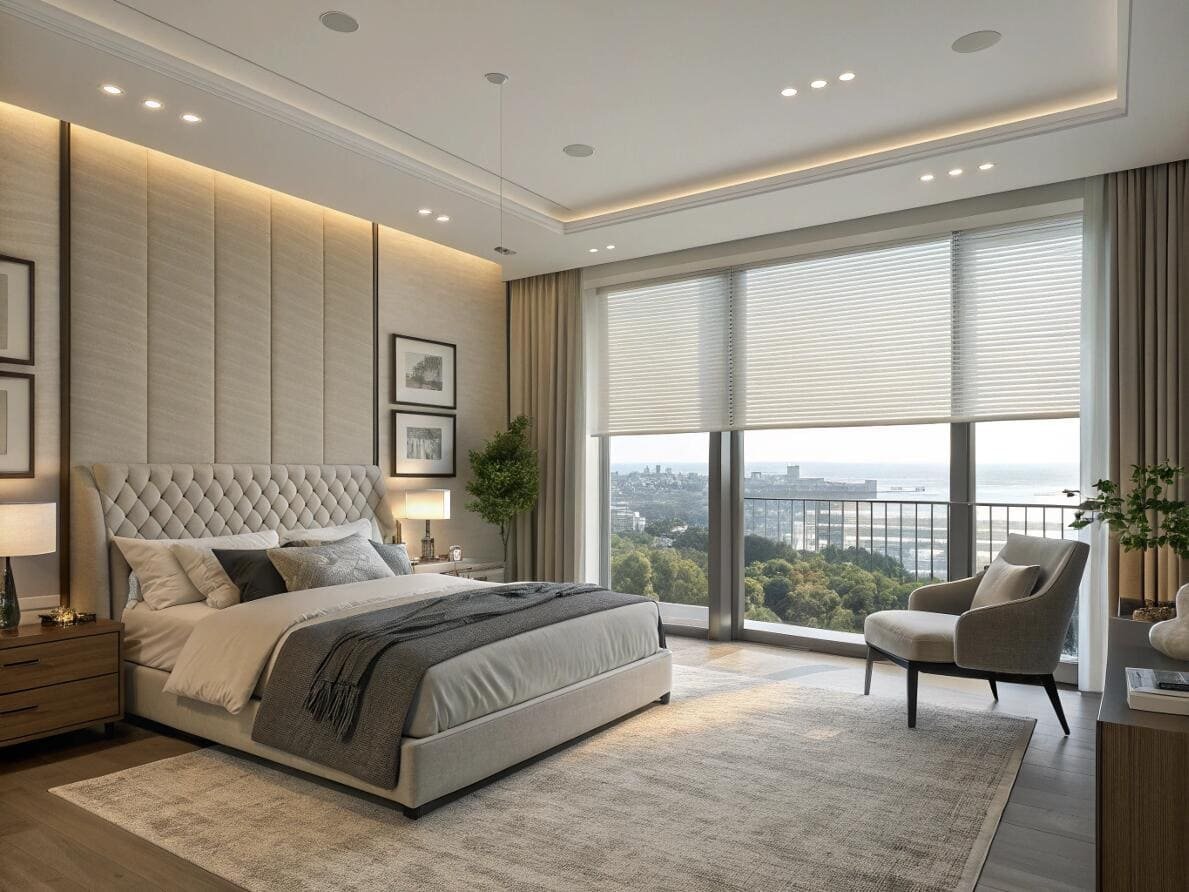
A smart blind is always more efficient than a manual one. Humans forget, but an automated system never does. It can react instantly to changing conditions to maximize savings throughout the day. By linking blinds to a light sensor, they can automatically close during the peak sun of a summer afternoon or open to capture solar warmth on a cold winter morning. This proactive control has a huge impact.
Furthermore, it helps slash lighting costs. For an office that needs a light level of 500 lux, you can use automated roller shades with a 5-8% transparency. The system will adjust them to let in maximum daylight without glare, allowing you to turn off 70% of the interior lights between 9 AM and 3 PM. In a 100 m² office, this can save around $310 in electricity costs annually. When you link the blinds' API to a smart thermostat, they can work together to reduce energy use by another 2-3%. The ROI is compelling, with a typical payback period of 4.2 years for a home and as fast as 2.8 years for a commercial project eligible for tax incentives.
Are there rebates or tax credits for energy-efficient blinds?
Your client wants to upgrade, but the initial cost is a concern. You're trying to find every possible incentive to make the project more affordable and push the deal forward.
Yes, many governments offer rebates and tax credits[^7] for certified energy-efficient window coverings. Programs in the US, EU, and Australia reward the use of products that meet specific standards like ENERGY STAR[^8] and EN 14501.
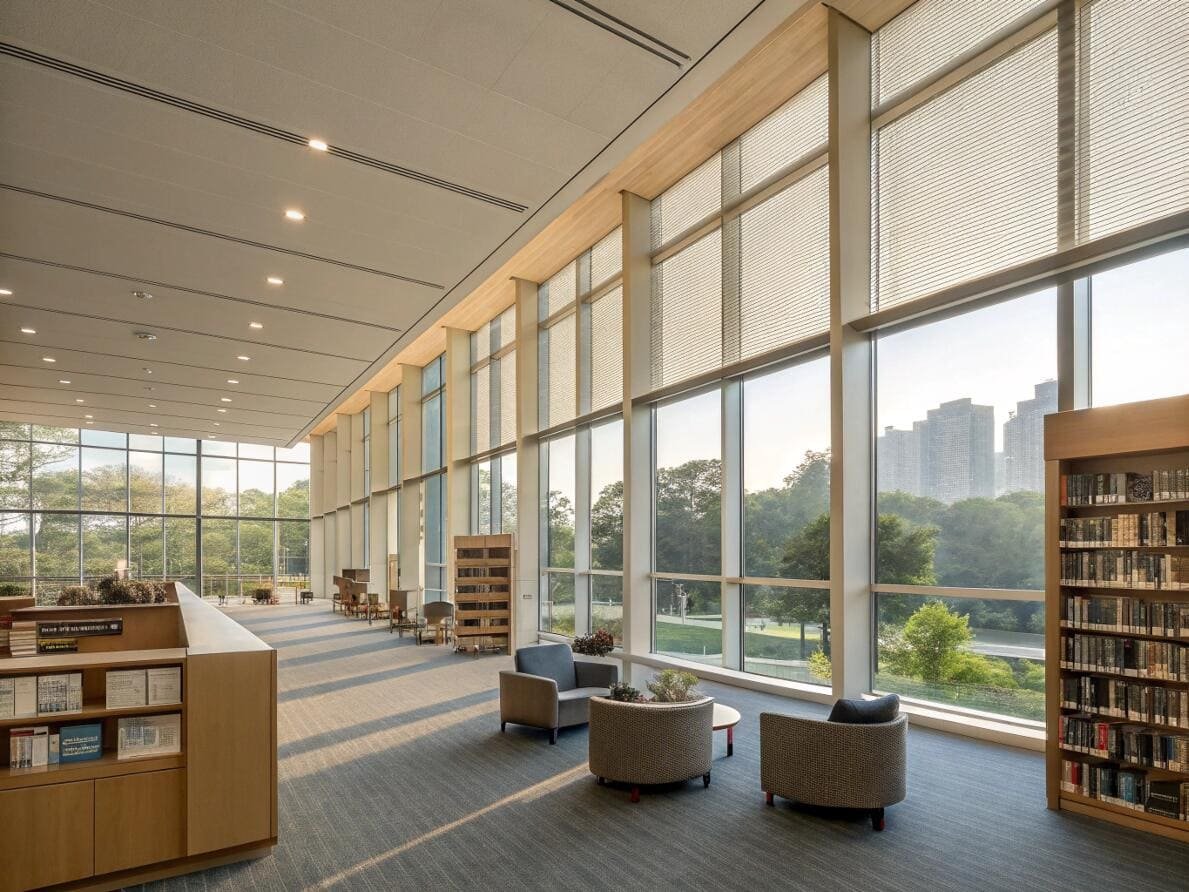
These incentive programs are designed to encourage property owners to make energy-saving upgrades. For a project manager, knowing about them is a powerful tool to reduce the net cost for your client. The key is to specify products that meet the required certification standards.
In the United States
The ENERGY STAR program provides clear guidelines. To qualify for the "Most Efficient" rating, a honeycomb shade must have a Solar Heat Gain Coefficient (SHGC) of 0.40 or less. Meeting this federal standard is often a prerequisite for unlocking state-level rebates and tax credits, which can significantly lower the project's final cost.
In the European Union
The key standard is EN 14501, which classes shading products based on their thermal and visual comfort performance. Specifying a product with a top rating (Class 4) can contribute points toward a building's NZEB (Near-Zero Energy Building) certification. This is a massive benefit for commercial properties[^9], as achieving NZEB status doesn't just reduce running costs—it directly increases the building's asset valuation and appeal to premium tenants. It's an investment that pays back multiple times over.
Conclusion
Window blinds are a critical investment in a building's energy performance. Choosing efficient materials and adding smart automation deliver measurable savings on power bills, enhancing property value and providing a fast, reliable return on investment.
---
[^1]: Explore methods to effectively reduce HVAC costs and improve energy efficiency.
[^2]: Understand the concept of thermal barriers and their role in energy conservation.
[^3]: Discover the advantages of using energy-efficient window treatments for your home or office.
[^4]: Get insights into U-Factor and its significance in evaluating window performance.
[^5]: Learn about SHGC and its impact on energy savings in buildings.
[^6]: Discover how light sensors can enhance energy efficiency and reduce costs.
[^7]: Find out about available rebates and tax credits that can help offset energy-efficient upgrades.
[^8]: Learn about the ENERGY STAR program and how it can benefit your energy efficiency projects.
[^9]: Stay updated on the latest energy efficiency trends in commercial properties.Partner with VelaBlinds for Your Next Project
Smart window treatments shouldn't be complicated. After working with 500+ distributors and contractors worldwide, I've streamlined the process to get you quality products, competitive pricing, and reliable support - every time.
Why project professionals choose VelaBlinds:
- ✅ Fast, Accurate Quotes - Detailed specs and pricing within 24 hours
- ✅ Transparent Pricing - No hidden fees, volume discounts clearly outlined
- ✅ Quality Assurance - Direct partnerships with certified OEM manufacturers
- ✅ Project Support - Dedicated account manager from quote to delivery
Start your next project:
📧 Quick Quote: Send your requirements to info@velablinds.com
📱 Direct Contact: WhatsApp +86 137 2012 8317
🌐 Browse Solutions: https://velablinds.com/
📁 Product Resources: Access spec sheets, catalogs & project files
Paul Chen, Founder
"I built VelaBlinds to solve the real challenges I faced as a project buyer - long lead times, unclear specs, and unreliable suppliers. Let's discuss how we can power your projects with smarter blinds."
Serving distributors and contractors across North America, Europe, and Australia since 2018.

